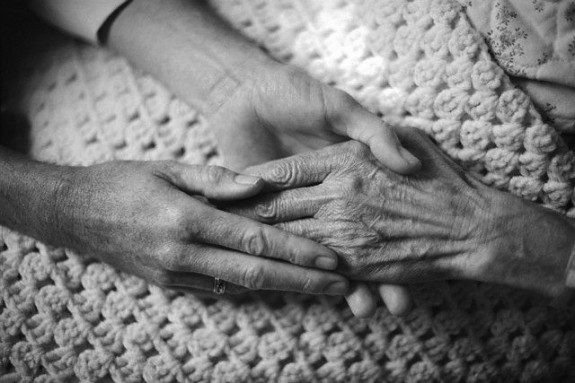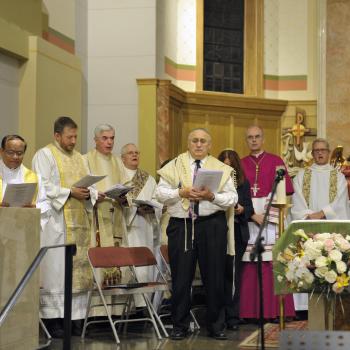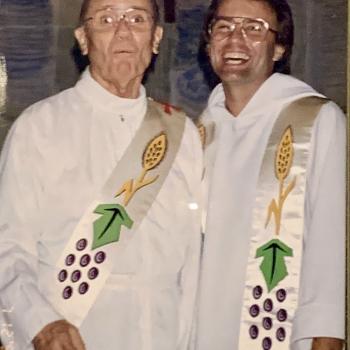Here’s an interesting glimpse into this phenomenon from Jaweed Kaleem at Huffington Post. I suspect a significant number of these funerals take place for reasons that are primarily economic. But it can’t be denied: the experience of death and mourning, when carried out in the home, is very different—immediate, intimate, familiar.
A little over five years ago, Alison and Doug Kirk held their 9-year-old daughter’s hand as she lay on a futon in their Nashville living room, told her they loved her, and watched her take her last breath.
The Kirks had known for a long time that their little girl, Caroline, would die. In her last weeks, she was under hospice care, lived off an oxygen machine, was fed through a tube, and spoke only in small murmurs. It was the normal course for a child born with Niemann-Pick, a terminal disease that gradually leads to the breakdown of the nervous system, brain and lungs.
What happened after Caroline’s death was anything but typical.
Alison and Doug carried Caroline upstairs to the bathtub, where they washed her skin and hair, dried her limp, 45-pound body with a towel and placed her head on a pillow on the bed in her old room. Alison slipped a white communion dress on Caroline, turned up the air-conditioning and put ice packs by her daughter’s sides. She put pink lipstick on the child’s paling lips, and covered up Caroline’s toes and fingers, which were turning blue at the nails, with the family quilt.
Caroline stayed in her bedroom for 36 hours for her final goodbyes. There was no traditional funeral home service, and no coroner or medical examiner was on hand. Caroline’s death was largely a home affair, with a short cemetery burial that followed.
“We had taken care of Caroline her whole life,” recalls Alison, whose other daughter, Kate, has the same disease and will also have a home funeral. “Why would we give her to someone else once she died?”
Each year, 2.5 million Americans die. For the majority, about 70 percent, deaths happen in a hospital, nursing home or long-term care facility. What happens afterwards is nearly always the same, with few exceptions for religious traditions: A doctor or nurse will sign a death certificate and the body will be whisked to the funeral home, where it’s washed, embalmed, dressed, and prepared for a viewing and burial. A family usually sees the dead only a few times: when they die, if there’s an open-casket viewing and in the rare case when a casket is opened during burial.
But a small and growing group of Americans are returning to a more hands-on, no-frills experience of death. In the world of “do it yourself” funerals, freezer packs are used in lieu of embalming, unvarnished wooden boxes replace ornate caskets, viewings are in living rooms and, in some cases, burials happen in backyards.












